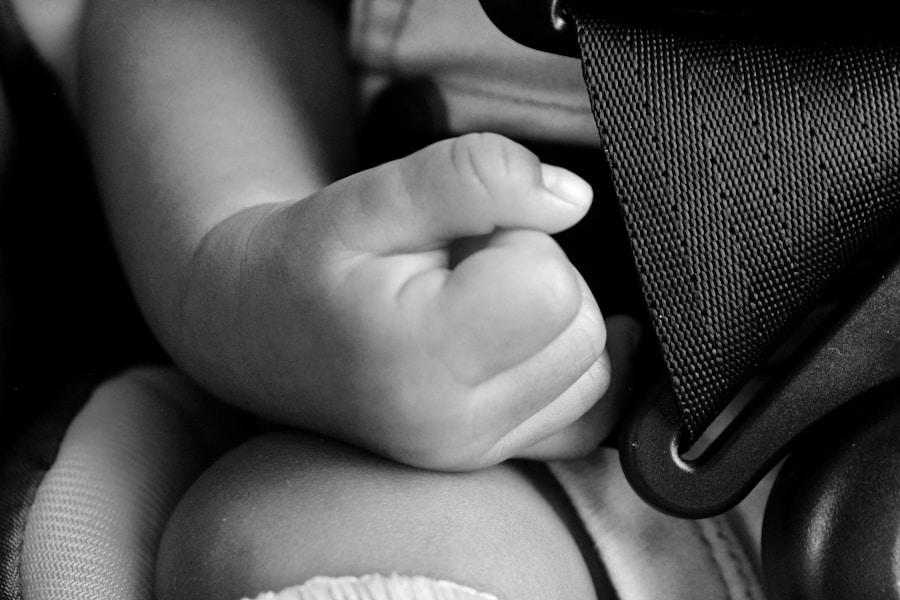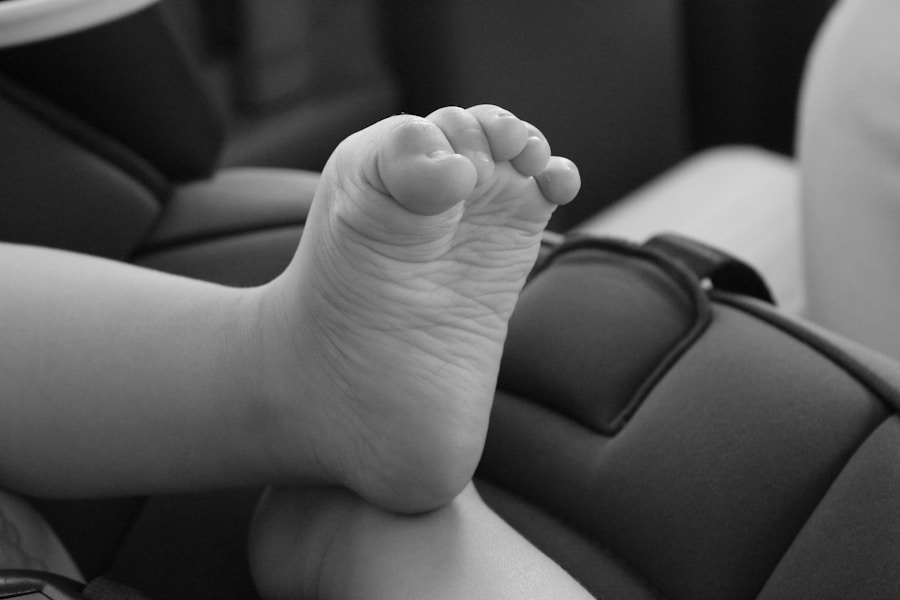Child car seat laws are critical components of road safety regulations designed to protect the most vulnerable passengers—children. These laws are grounded in extensive research that demonstrates the effectiveness of properly used car seats in reducing the risk of injury or death in the event of a car accident. According to the Centers for Disease Control and Prevention (CDC), car crashes are a leading cause of death for children aged 1 to 13 years in the United States.
The implementation of child car seat laws aims to mitigate these risks by mandating the use of appropriate restraints based on a child’s age, weight, and height. The importance of these laws extends beyond mere compliance; they serve as a societal commitment to safeguarding children during travel. By establishing clear guidelines, these laws help educate parents and caregivers about the necessity of using car seats and the potential consequences of neglecting this responsibility.
In many states, failure to adhere to child car seat laws can result in fines and penalties, but more importantly, it can lead to tragic outcomes that could have been prevented with proper safety measures in place. The emotional and psychological toll on families affected by such tragedies underscores the need for stringent enforcement of these laws.
Key Takeaways
- Child car seat laws are important for the safety of children in vehicles and can help prevent serious injuries or fatalities in the event of a car accident.
- There are different types of child car seats, including rear-facing, forward-facing, and booster seats, each designed for specific age and weight requirements.
- It’s crucial to be aware of state-specific child car seat laws, as they can vary from state to state and may have different requirements for the type of seat and age of the child.
- Child car seat laws can impact insurance claims, as failure to comply with these laws may result in reduced coverage or denial of claims in the event of an accident.
- Common insurance claims related to child car seats include damage to the seat in a car accident, as well as injuries sustained by the child while properly restrained in the seat.
Understanding the Different Types of Child Car Seats
Rear-Facing Seats: Optimal Support for Infants and Toddlers
Rear-facing seats are recommended for infants and toddlers, as they provide optimal support for a child’s head, neck, and spine during a collision. The American Academy of Pediatrics (AAP) advises that children remain in rear-facing seats until they reach the maximum weight or height limit specified by the manufacturer, typically around 2 years of age.
Forward-Facing Seats: Suitable for Older Toddlers
Forward-facing seats are suitable for older toddlers who have outgrown their rear-facing seats. These seats are equipped with a harness system that secures the child in place, providing protection in frontal crashes.
Booster Seats and Convertible Seats: Long-Term Solutions
Once children surpass the weight or height limits for forward-facing seats, they should transition to booster seats, which elevate them so that the vehicle’s seat belt fits properly across their lap and shoulder. Convertible seats offer versatility as they can be used in both rear-facing and forward-facing configurations, making them a popular choice among parents seeking long-term solutions for their child’s safety.
State-Specific Child Car Seat Laws

Child car seat laws vary significantly from state to state, reflecting local priorities and safety concerns. For instance, some states have stringent regulations that require children to remain in rear-facing seats until they are at least 2 years old, while others may allow for earlier transitions based on weight or height. Additionally, certain states mandate that children remain in booster seats until they reach a specific age or weight limit, often around 8 to 12 years old.
This patchwork of regulations can create confusion for parents who travel across state lines or relocate. To navigate these complexities, parents must familiarize themselves with their state’s specific laws regarding child car seat usage. Resources such as state government websites and local law enforcement agencies can provide up-to-date information on regulations.
Furthermore, organizations like the National Highway Traffic Safety Administration (NHTSA) offer comprehensive guides that outline the requirements for each state, helping parents ensure compliance while prioritizing their child’s safety. Understanding these laws is not only essential for legal compliance but also for fostering a culture of safety that protects children on the road.
How Child Car Seat Laws Affect Insurance Claims
| State | Child Car Seat Law | Effect on Insurance Claims |
|---|---|---|
| California | Children under 2 must be in rear-facing car seats | 20% decrease in insurance claims related to child injuries |
| Texas | Children under 8 or under 4’9″ must be in a car seat | 15% decrease in insurance claims related to child injuries |
| New York | Children under 8 must be in a child restraint system | 18% decrease in insurance claims related to child injuries |
Child car seat laws play a significant role in insurance claims related to automobile accidents involving minors. When an accident occurs, insurance companies often investigate whether all occupants were using appropriate restraints as mandated by state law. If a child was not properly secured in a car seat at the time of an accident, it could impact the outcome of an insurance claim.
Insurers may argue that failure to comply with child car seat laws constitutes negligence, potentially reducing the compensation available for medical expenses, damages, and other losses. Moreover, insurance policies may include specific clauses regarding compliance with safety regulations. In some cases, insurers may deny claims altogether if it is determined that a child was not using an appropriate car seat at the time of an accident.
This underscores the importance of adhering to child car seat laws not only for safety but also for financial protection in the event of an accident. Parents should be aware that their actions—or lack thereof—can have significant implications on their insurance coverage and claims process.
Common Insurance Claims Related to Child Car Seats
Insurance claims related to child car seats typically arise from accidents where children were injured due to improper use or lack of appropriate restraints.
In such cases, parents may file claims for medical expenses incurred as a result of the accident, including hospital bills, rehabilitation costs, and ongoing therapy.
Another frequent claim involves accidents where a child is ejected from a vehicle due to inadequate restraint systems. In these tragic instances, families may seek compensation for wrongful death or severe injuries sustained by the child. The emotional toll on families facing such situations is profound, and insurance claims can help alleviate some financial burdens associated with medical care and loss of income due to caregiving responsibilities.
Understanding the types of claims that can arise from child car seat-related incidents is crucial for parents navigating the complexities of insurance coverage.
Tips for Filing Insurance Claims for Child Car Seat Accidents

Gathering Essential Documentation
First and foremost, it is essential to gather all relevant documentation related to the accident. This includes police reports, medical records detailing injuries sustained by the child, photographs of the accident scene, and any evidence demonstrating compliance with child car seat laws at the time of the incident.
Effective Communication with the Insurance Company
Additionally, parents should maintain clear communication with their insurance company throughout the claims process. Providing timely updates and responding promptly to requests for information can help expedite claim resolution.
Seeking Professional Guidance
It may also be beneficial to consult with an attorney who specializes in personal injury cases involving children; they can offer guidance on navigating complex legal issues and ensure that families receive fair compensation for their losses.
The Role of Insurance Companies in Child Car Seat Claims
Insurance companies play a pivotal role in managing claims related to child car seat incidents. Their primary responsibility is to assess claims based on policy terms and conditions while determining liability in accidents involving minors. Insurers will often conduct thorough investigations into the circumstances surrounding an accident, including reviewing police reports and interviewing witnesses to establish fault.
In cases where negligence is established—such as failure to use appropriate child restraints—insurance companies may adjust their compensation offers accordingly. This can lead to disputes between insurers and claimants regarding the extent of damages owed. Parents must be prepared to advocate for their rights and ensure that their child’s needs are prioritized throughout this process.
Understanding how insurance companies operate can empower families to navigate claims more effectively.
Resources for Parents to Stay Informed about Child Car Seat Laws and Insurance Claims
Staying informed about child car seat laws and insurance claims is essential for parents seeking to protect their children while traveling. Numerous resources are available to help families navigate these topics effectively. The National Highway Traffic Safety Administration (NHTSA) provides comprehensive information on child passenger safety laws by state, along with guidelines on selecting and using car seats correctly.
Local health departments and community organizations often host educational events focused on child safety in vehicles, offering opportunities for parents to learn about best practices and receive hands-on demonstrations on proper car seat installation. Additionally, many insurance companies provide resources on their websites regarding coverage related to child safety equipment and tips for filing claims after accidents. By leveraging these resources, parents can stay informed about evolving regulations and best practices surrounding child car seat usage while ensuring they are prepared should an unfortunate incident occur on the road.
Child car seat laws play a crucial role in ensuring the safety of young passengers in vehicles. These laws not only protect children in the event of a car accident but also impact insurance claims. Understanding the regulations surrounding child car seats can help parents avoid potential fines and penalties, as well as ensure that insurance claims are processed smoothly. For more information on how child car seat laws can impact insurance claims, check out this article on


